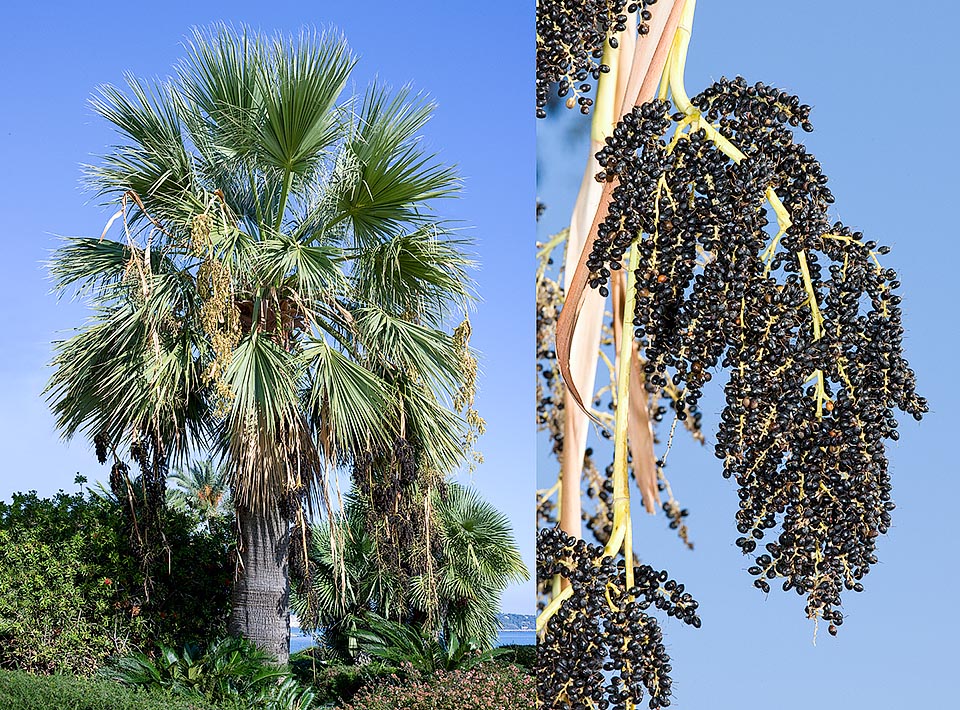Family : Arecaceae

Text © Pietro Puccio

English translation by Mario Beltramini
The Washingtonia filifera (Linden ex André) H. Wendl. (1879) is is native to the south-west of USA (Arizona and California), and north-west of Mexico (northern Baja California), where it grows up in semi-desert locations placed in the bottom of canyons, where the water is present, or close to natural sources. It is known in the English-speaking countries as California fan palm, Washington palm, Desert fan palm, and Petticoat palm.
The name of the genus, which includes only two species, honours the first president of USA, George Washington; the name of the species comes from the filaments present between the foliar segments.
It presents a solitary, stout, trunk, of about 60-80cm of diameter, of greyish colour in its older part, brown-reddish, in the younger one, tall up to about 20 metres, and widening at the base, covered in the wild, in the upper part, of persistent dry leaves, from which comes one of the several common names with which it is known: petticoat palm. Opaque, costapalmate, pale green leaves, bifid segments hanging on the terminal part in the adult plants with several filaments; the petiole presents whitish thorns, which tend to part and get smaller when close to the foliar lamina.

Native to USA and Mexico the Washingtonia filifera is quite resistant to low temperatures. Numerous blackish globous fruits of 5 mm © Giuseppe Mazza
Curved inflorescences, 2-3 metres long, which generally overcome the leaves. They carry many whitish hermaphrodite flowers followed by blackish globous fruits of about five millimetres of diameter, produced in huge quantity. It reproduces easily by seed, which are germinating in about thirty days.
Palm of great ornamental value, spread in all Mediterranean climate areas, where it has practically naturalized. The presence, contemporaneous, of the other plant belonging to the genus, the Washingtonia robusta, with which it hybridizes easily, has acted in such a way that presently, in certain areas, there are present, in cultivation, more hybrids than pure species. It has not any particular exigency of cultivation, apart a position in full sun, but grows up better in alkaline soils, even semi-arid and poor, and is quite resistant to low temperatures (-10 °C, even some grade less, for short periods and in dry climates).
Synonyms: Brahea filamentosa (H.Wendl. ex Franceschi) H.Wendl. ex Kuntze (1891); Neowashingtonia filamentosa (H.Wendl. ex Franceschi) Sudw.(1897); Neowashingtonia filifera (Linden ex André) Sudw. (1908); Pritchardia filamentosa H.Wendl. ex Franceschi (1876); Pritchardia filifera Linden ex André (1874); Washingtonia filamentosa (H.Wendl. ex Franceschi) Kuntze (1891); Washingtonia filifera var. microsperma Becc. (1907).
→ For general notions about ARECACEAE please click here.
